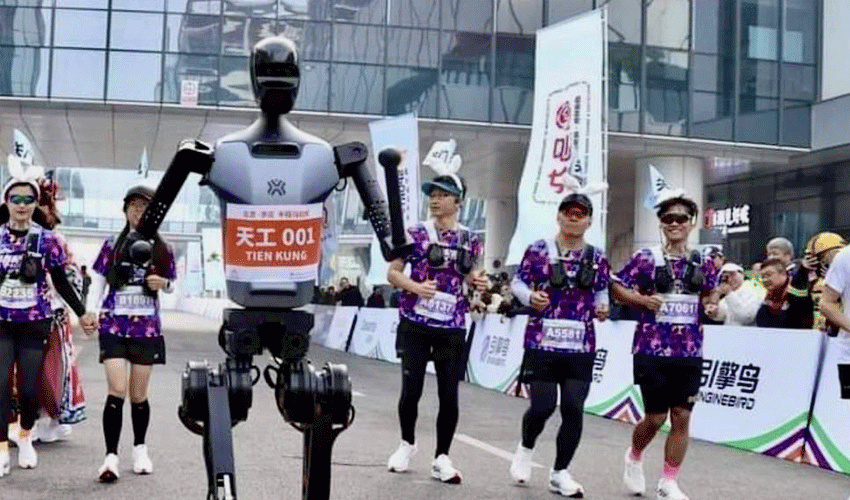In a global first, over 20 humanoid robots participated in a half-marathon in Beijing on Saturday, but despite impressive technological advancements, they were no match for their human counterparts over the 21-kilometer distance.
The race, held in Beijing’s southeastern Yizhuang district, highlighted China’s progress in humanoid robotics as the nation aims to bridge the gap with Western countries in this rapidly evolving field. Robots from various universities and tech companies lined up alongside more than 12,000 human participants, seeking to test their running capabilities on a demanding course.
While the robots’ performances were technologically noteworthy, they struggled to keep pace with the speed and endurance of human runners. The first robot to cross the finish line was Tiangong Ultra, developed by the Beijing Humanoid Robot Innovation Center. The machine completed the race in two hours and 40 minutes—significantly slower than the world record of 56:42 set by Ugandan runner Jacob Kiplimo. The fastest human finisher of the day completed the course in just 1 hour and 2 minutes.
Despite the considerable difference, Tang Jian, the Chief Technology Officer of the Beijing Humanoid Robot Innovation Center, expressed pride in Tiangong Ultra’s performance. “I don’t want to boast, but I believe no other robotics firms in the West have matched Tiangong’s sporting achievements,” he stated, noting that the robot’s sophisticated algorithm aided it in mimicking the way humans run a marathon.
While the robots demonstrated their potential, the race was not without its challenges. Many robots required battery replacements during the race, while others needed to be remotely controlled or were even tethered by a leash. Additionally, human assistants were necessary to support the robots, ensuring they did not fall and helping with recharging their batteries.
The event served as a reminder that while China has made considerable strides in humanoid robotics, the technology still has a significant distance to cover before it can compete with the agility and endurance of human athletes.
The Chinese government has prioritized the advancement of humanoid robotics, recognizing it as a “new frontier in technological competition.” In a policy document released in 2023, China’s Ministry of Industry and Information Technology set a target of 2025 for mass production and the establishment of secure supply chains for core components.
Although the race highlighted the disparity between robots and humans in terms of physical performance, it also underscored the increasing potential of robots in various sectors, including manufacturing, logistics, and even sports. With substantial investment and research, China aims to continue spearheading developments in humanoid robotics.



